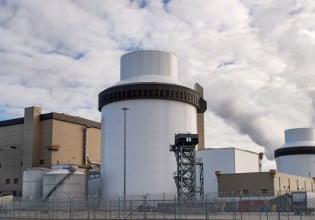$70M Grant to ASU to Bolster Clean Energy Manufacturing Innovation Institute
ASU will oversee the efforts of a coalition under the umbrella of the Electrified Processes for Industry Without Carbon program.
In mid-May 2023, the U.S. Department of Energy (DOE) chose ASU to head the seventh Clean Energy Manufacturing Innovation Institute.
Clean energy. Image used courtesy of Pixabay
That means ASU will oversee and activate the efforts of a coalition of community partners, national laboratories, labor unions, private companies, and universities as they work through research, development, and demonstration projects centering on decarbonizing the industrial sector and electrifying process heating.
This work will happen under the umbrella of an ASU program called Electrified Processes for Industry Without Carbon (EPIXC).
Industry as a Decarbonization Priority
People have varying opinions on how to meet the world’s decarbonization strategies. But, they agree there’s not much time to reach those goals. So, one proposed approach is to target the sectors currently accounting for large percentages of overall emissions.
The industrial sector causes 30% of U.S. greenhouse gas emissions, according to the DOE. At the same time, it’s a vital economic driver, so people must focus on figuring out how to keep that segment profitable and productive but more sustainable.
Carbon emissions. Image used courtesy of Pixabay
Alejandro Moreno, acting assistant secretary for energy efficiency and renewable energy, explained that everyone must work together and use multidimensional strategies to keep the country on track to achieve its decarbonization milestones. He believes that, in addition to reaching the necessary decarbonization objectives, this approach will improve and solidify the country’s position as a leader in the clean energy economy.
The DOE has six other institutes under the Manufacturing USA umbrella. The participants solve technical challenges, share resources and train future workforces. The underlying aim of all those activities is to bolster the United States manufacturing industry and promote the production of products in the country.
More About EPIXC
The people working on ASU’s Electrified Processes for Industry Without Carbon project will target several sectors identified as the most significant carbon emitters. Those are steel, petroleum refining, forest products, food and beverage, chemicals, cement, and iron.
The goal is to achieve net-zero emissions in those sectors using cost-effective options that generate meaningful results. Public-private partnerships between engineers, scientists, and other experts will be instrumental in getting the desired results.
A primary aim is to move clean energy innovations from the laboratory into the market–vital for moving the country and world from fossil fuels to progressively more clean energy. Lasting change cannot happen overnight, but slow, steady progress will bring the desired results.
Helping a New Generation of Engineers
Kyle Squires, vice provost of engineering, computing, and technology and dean of the Ira A. Fulton Schools of Engineering at ASU, said this work would help new generations of engineering leaders grow while supporting equitable technological innovations benefitting the impacted communities.
Additionally, Sridhar Seetharaman, director of EPIXC and vice dean of research and innovation in the Ira A. Fulton Schools of Engineering at ASU, emphasized this work is part of a larger transition to the United States clean energy future. Seetharaman continued by highlighting the need to become aware of the social justice ramifications of the effort.
For example, the existing energy landscape creates disadvantaged communities by positioning petrochemical plants in ways that detract from nearby residents’ quality of life. Some community members experienced health problems due to the proximity of the petrochemical plants to their homes. One of the ways to address them for good is to change how energy generation occurs.
However, Squires acknowledges the challenges of making industrial manufacturing more energy efficient. There will undoubtedly be technical and societal challenges to overcome. Fortunately, the collaborative nature of the work will allow participants to pool their efforts and discover possibilities they have yet to think of independently.
Industrial manufacturing. Image used courtesy of Pixabay
Moreover, many of the country’s biggest challenges are among the most rewarding once solved. Even if it takes years to find feasible solutions, what people learn will help others doing similar work.
Outlook for More Sustainable Industrial Operations
The industrial sector keeps the country functioning, but people know the sustainability improvements that must happen. The $70 million grant–allocated over the next five years–will substantially drive the progress necessary to get lasting results that improve the nation and the planet.
Reducing carbon emissions is difficult, and no universal and guaranteed solution exists. However, targeted work like this will break down barriers and show the way forward. Financial resources and the combined knowledge of everyone involved could get outcomes that serve as templates for other countries to follow in their clean energy transitions.









